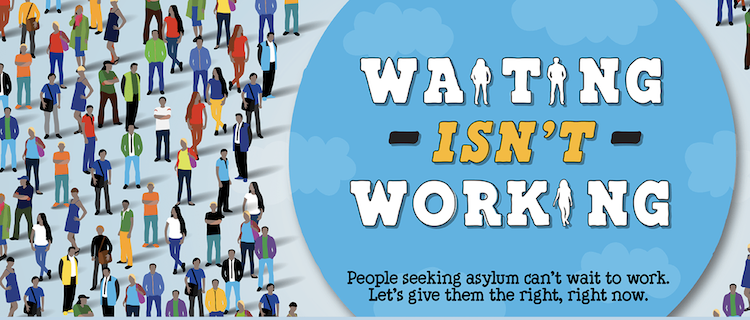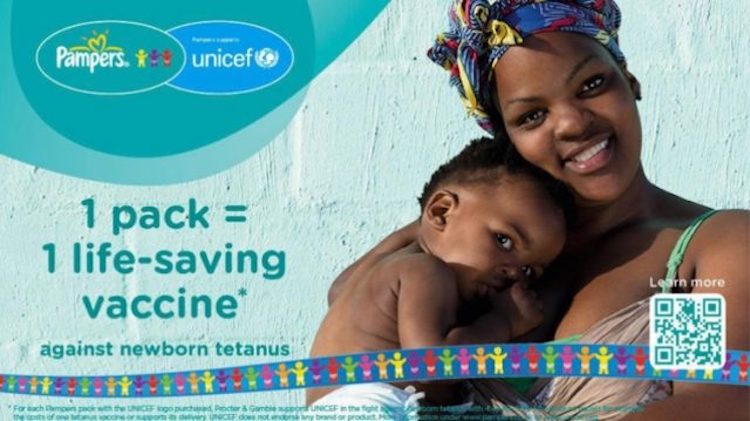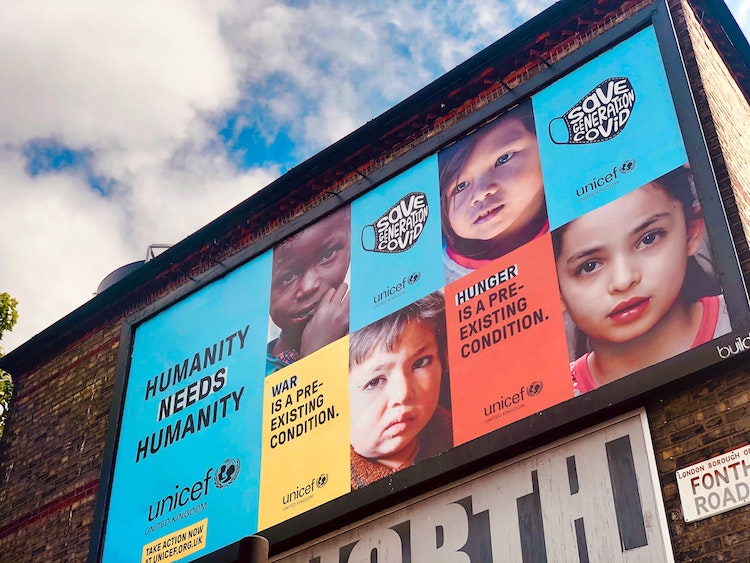
The PR Benefits of Cause Related Marketing
From climate change and pollution, to hunger and poverty, the world faces some mammoth challenges. Governments and charities are doing their best to tackle them, but they can’t do it alone. The problems are way too big, complicated, and expensive. There’s an overwhelming need for businesses to play their part.
This is where corporate social responsibility (CSR) and cause related marketing comes in.
What is corporate social responsibility?
There’s no single definition of corporate social responsibility. But the World Business Council for Sustainable Development describes it as ‘the continuing commitment by businesses to behave ethically and contribute to economic development while improving the quality of life of the workforce, local community and society at large.’ Essentially, it’s about giving back.
Why does CSR matter?
As well as the moral obligation for businesses to give back, consumers are increasingly looking to buy from socially responsible businesses. Research by global communications firm Edelman found that two-thirds (64%) of consumers around the world buy on belief. This is key, as belief-driven buyers will choose or avoid a brand based on where it stands on the social issues that are important to them.
And it’s not just consumers that care. So do employees. In a global survey by Nielsen, (67%) of respondents said they would prefer to work for a socially responsible company.
What does this mean for your business? It’s simple. If you make a genuine effort to make a difference and prove you care about more than just your bottom line, you’ll have a much easier time attracting customers, top talent and the attention of journalists.
For more advice on building a CSR strategy, read: What is corporate social responsibility?
Making a difference with cause related marketing

There are lots of ways to give back. Some companies donate money to charity. Some donate employees’ time. Others implement environmentally-friendly policies or Fairtrade practices.
But one of the most impactful ways you can give back is with cause related marketing.
What is cause related marketing?
Cause related marketing, or cause marketing, is a marketing strategy that involves a partnership between a business and a charity. So a business ties its marketing strategy to the fundraising needs of a charity in order to raise awareness and money around a cause.
But it’s not just the charity that benefits. Showing you care about issues that affect your customers and the wider world can boost customer loyalty, improve brand perception and earn you precious media coverage.
Here are a few stand-out examples of cause related marketing campaigns:
Innocent & Age UK: The Big Knit

In 2003, smoothie brand Innocent partnered with Age UK to tackle the issue of loneliness amongst the elderly population.
The brand launched an initiative called ‘The Big Knit’, where they called on members of the public to knit tiny woollen hats to put on their smoothie bottles. For every behatted bottle sold, the brand donated 25p to Age UK.
The campaign, which is still going strong today, has raised more than £2 million for the charity. It’s also inspired a trend for knitting parties, which people hold up and down the country to support the appeal each year. It’s a great way to bring people together for a good cause and combat loneliness.
The initiative has earned Innocent a bunch of awards and coverage, which has gone a long way to cementing the brand as one that cares.
The lesson
This cause related campaign is simple but effective, as it gives people a practical way to get involved and make a difference. If you can get your customers actively involved in your cause related marketing campaign, you’re on to a winner.
Ben & Jerry’s & Refugee Action: #LiftTheBan

Each year, thousands of people are forced to flee their countries due to war or violence. Those that seek asylum in the UK can often wait months or even years for a decision from the government. During this period, they’re not allowed to work. This ban on working forces many into poverty.
Last year, ice cream brand Ben and Jerry’s took a stand against the injustice with a cause related marketing campaign called ‘waiting isn’t working’. In support of Refugee Action’s #LiftTheBan initiative, the brand gave away free ice cream and hot chocolate on the streets of London. In return, they gathered signatures on their petition calling on the UK Government to give asylum seekers the right to work.
As a result of Ben & Jerry’s partnership with Refugee Action and the efforts of other charities and campaigning groups, the UK Government is reviewing its policy on asylum seekers’ rights to work in the UK.
The lesson
Ben & Jerry’s are renowned for taking a stand on issues they feel passionately about. From climate justice, to LGBTQ and equality, they use political campaigning rather than traditional advertising to make a difference.
And it’s been a resounding success. The cause driven approach has won them legions of loyal fans, loads of media attention from the likes of The Guardian, BBC News and The Daily Mail, and its reinforced their mission to ‘operate the company in a way that actively recognises the central role that business plays in society by initiating innovative ways to improve the quality of life locally, nationally and internationally’.
This goes to show, if you feel strongly about a cause, lobbying/campaigning in conjunction with a charity can get great results. Just remember, the cause should align with your company values, or it’ll come across as inauthentic.
Pampers and UNICEF

Procter & Gamble’s Pampers brand has a long-standing history of doing the right thing, with its long-running partnership with humanitarian charity UNICEF.
The two brands joined forces in 2006 to fight maternal and neonatal tetanus (MNT), an infectious disease that’s responsible for the deaths of thousands of women and newborn babies in developing countries each year.
The cause related marketing campaign dubbed ‘1 Pack = 1 Vaccine’ is simple: for every specially marked pack of Pampers sold between October and December each year, Pampers’ parent company, Procter & Gamble donates the cost of one vaccine to UNICEF.
Over the years, this simple cause related marketing campaign has funded 300 million tetanus vaccines, and eliminated MNT from 17 countries. This is no mean feat.
The lesson
The secret to the success of this cause related campaign is the synergy between the two brands. Pampers’ target market is mothers. The people falling prey to MNT are mothers. By appealing to the sympathies of mothers around the risks of childbirth in poor nations, Pampers has shone a spotlight on a little-known disease and saved millions of lives. Beat that for a PR story.
The ingredients of a successful cause related marketing campaign

These three inspiring cause related marketing examples show just how powerful it can be, both for the greater good and for brand reputation. But before you launch headfirst into a partnership, there are a few things to take into consideration:
Choose a cause that fits with your brand
You may have a cause in mind that you feel strongly about. But before you jump into a partnership, ask yourself if it’s a good fit. For example, if you own a pet food business, it doesn’t make sense to align yourself with a homeless charity. An animal shelter or rescue centre would make more sense.
If you choose a cause that isn’t related to your product or service in some way, your cause related marketing campaign will most likely fall on deaf ears.
Do your due diligence
Be sure to perform due diligence checks on your potential charity partner in the same way you would with a corporate partner. You don’t want to risk damaging your reputation by aligning yourself with a charity that’s unethical or has received bad press.
Your employees and the public should feel confident that the money donated will be used for legitimate purposes and is reaching its intended beneficiaries.
Look up the charity on the charity register. You’ll find details of the trustees, the mission and charitable aims of the organisation, and its financial position.
Get buy-in from your employees
If your CRM campaign is going to work, you need buy-in from your employees and stakeholders. So, involve them in the decision. Ask them which causes they’re interested in. Run a company-wide survey or start a conversation in a company meeting to understand what they’re passionate about.
If your staff buy into the concept, they’ll work harder and feel passionate about helping.
Don’t just contribute money
Money is important to cash-strapped charities, but time and expertise can be just as valuable. If you’re partnering with a homeless shelter, see if your staff can volunteer in the soup kitchen. If you’re supporting a care home for the elderly, why not arrange a fun social event for the residents?
Invest in the partnership and you’ll reap the rewards, both in terms of employee engagement and positive PR.
Work closely with your charity partner
For cause related marketing to work and for the benefits to be realised on both sides, you need to have an open and trusting relationship. The charity must feel confident that your organisation has their best interests at heart, and you need to be sure that your goals are aligned.
Discuss your cause related marketing ideas with charity staff. Work together on a plan and you’ll get much better results than working in a silo.
Fundraising ideas

If you want to raise money for your charity partner but don’t know where to start, here are a few ideas for you to consider.
Organise a fundraising event
If you’re looking for a high-profile way to support a cause, a fundraising event could be the way to go. Events can include anything from a 10K run or bikeathon, to a talent show or quiz night. Keep in mind, the more creative you are with your event, the better the results are likely to be, both in terms of profit and PR.
If you want some inspiration, just look at the BBC. They organise three major fundraising events each year that raise millions for worthy causes in the UK and abroad: Children in Need, Comic Relief and Sports Relief.
Donate a cut of your profits
You can sell products, support a cause, and make profit at the same time by doing what Pampers and Innocent do: donate a small percentage of each sale to their chosen charity. This is a perfectly legitimate way to fundraise, as long as you’re clear about how much money will go to charity in your marketing. If you hide anything, it could end up doing your reputation more harm than good.
Corporate sponsorship
Another way to support your charity partner is by sponsoring their events. For example, if they’re hosting a fundraising ball, you could sponsor the catering, or the entertainment.
Essentially, this means you are covering the cost of that aspect of the event. In return, the charity will acknowledge you as a sponsor at the event and get your brand in front of people who may be haven’t heard of your business.
Most charities offer a range of sponsorship packages to suit different budgets and PR goals.
Leave a donation box by the till
If your company has physical stores, why not leave a donation box at the till? Most charities have branded collection tins and customers will often donate their small change if there’s a charity box to hand.
Checkout campaigns can raise a lot of money, in return for very little effort.
Help with your cause related marketing strategy
In this day and age, achieving success in business is about more than a healthy bottom line. You need to take an interest in issues that affect your staff, community and the wider world, and take steps to initiate change.
The advantages of implementing a cause related marketing strategy are vast. If you pick the right charity and go above and beyond to make a difference, it’ll pay dividends in terms of customer loyalty, brand perception and that all-important company reputation.






